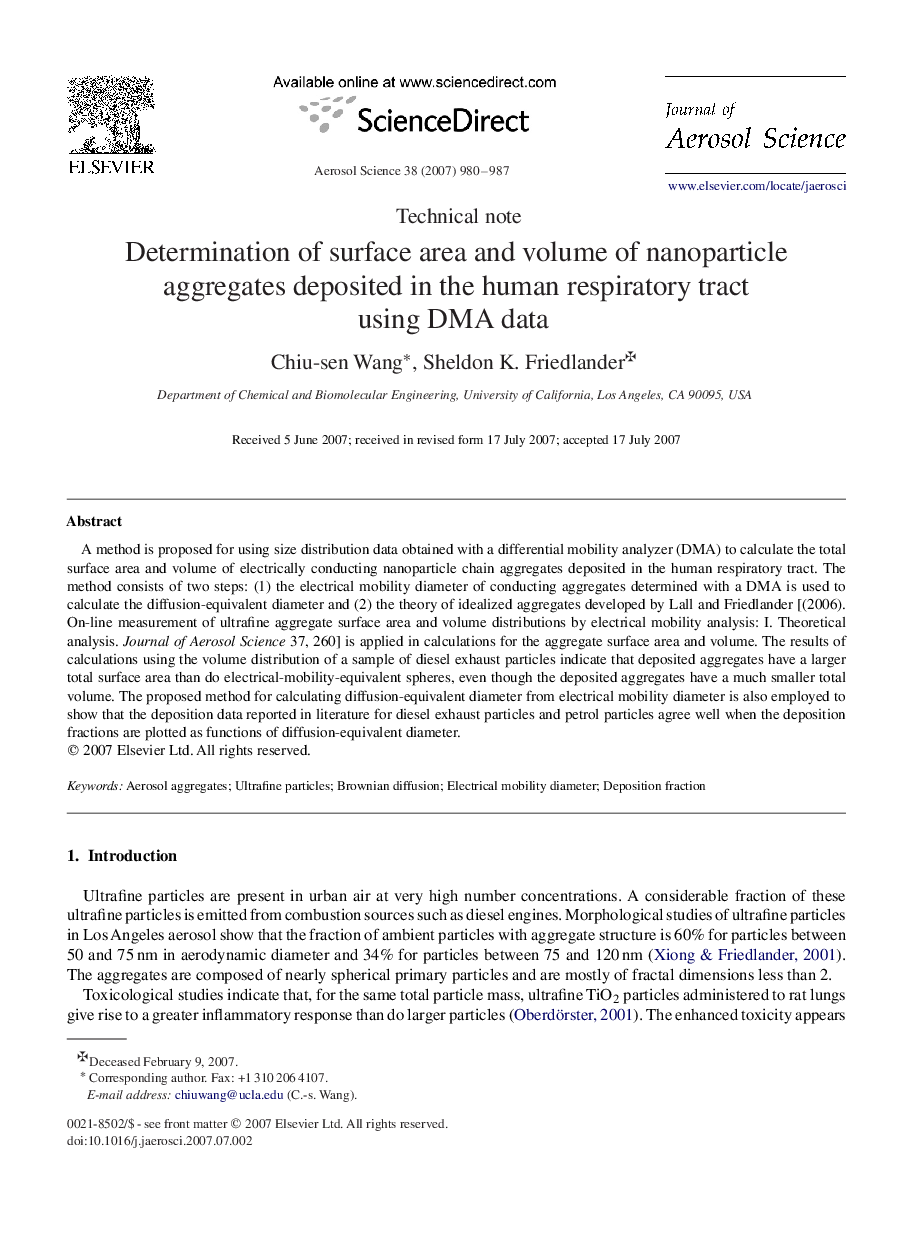| Article ID | Journal | Published Year | Pages | File Type |
|---|---|---|---|---|
| 4453240 | Journal of Aerosol Science | 2007 | 8 Pages |
A method is proposed for using size distribution data obtained with a differential mobility analyzer (DMA) to calculate the total surface area and volume of electrically conducting nanoparticle chain aggregates deposited in the human respiratory tract. The method consists of two steps: (1) the electrical mobility diameter of conducting aggregates determined with a DMA is used to calculate the diffusion-equivalent diameter and (2) the theory of idealized aggregates developed by Lall and Friedlander [(2006). On-line measurement of ultrafine aggregate surface area and volume distributions by electrical mobility analysis: I. Theoretical analysis. Journal of Aerosol Science 37, 260] is applied in calculations for the aggregate surface area and volume. The results of calculations using the volume distribution of a sample of diesel exhaust particles indicate that deposited aggregates have a larger total surface area than do electrical-mobility-equivalent spheres, even though the deposited aggregates have a much smaller total volume. The proposed method for calculating diffusion-equivalent diameter from electrical mobility diameter is also employed to show that the deposition data reported in literature for diesel exhaust particles and petrol particles agree well when the deposition fractions are plotted as functions of diffusion-equivalent diameter.
